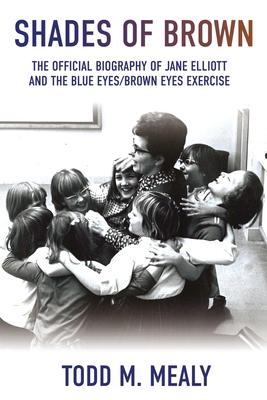What if, by eight years old, children could possess the mechanism to disrupt prejudicial tendencies? That is an argument posited by Jane Elliott for more than five decades. She initially made the claim the day after the assassination of Martin Luther King Jr.-first with elementary school students in Riceville, Iowa, then with adults in seminar rooms full of corporate, correctional, educational, and military personnel. Elliott is famous for placing learners of all ages into a manufactured society of hate, oppression, and in-group synchrony. In Shades of Brown, historian Todd M. Mealy offers a fascinating, never-before-told reconstruction of Elliott's life as a child on a Depression-era farm in Iowa to her rise as one of the world's leading voices on the anatomy of prejudice.
Loved and despised by millions, this schoolteacher invested most of her life trying to expose the root cause of bigotry: ignorance. Racism is not new. It will likely never end. However, in 1968, Elliott discovered a method to mitigate racist inclinations. She calls it the "Blue Eyes/Brown Eyes Exercise," a controversial role-play on discrimination that separates learners by the color of their eyes. Elliott contends that a short period of discomfort and alienation will teach her central lesson that we are one race.
Based on rarely tapped sources, especially never discovered family documents, Shades of Brown offers the full context of the origin, use, and implications of the Blue Eyes/Brown Eyes Exercise.
